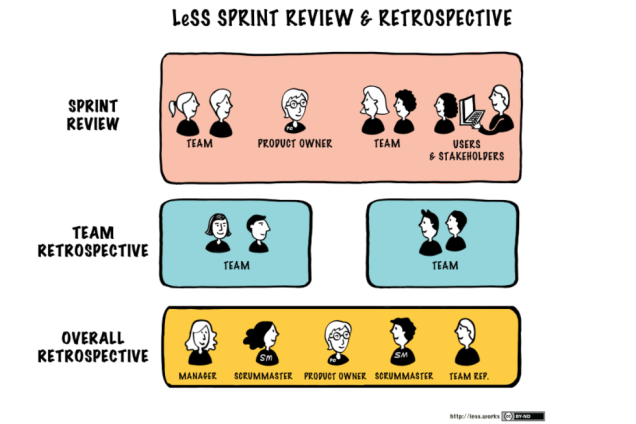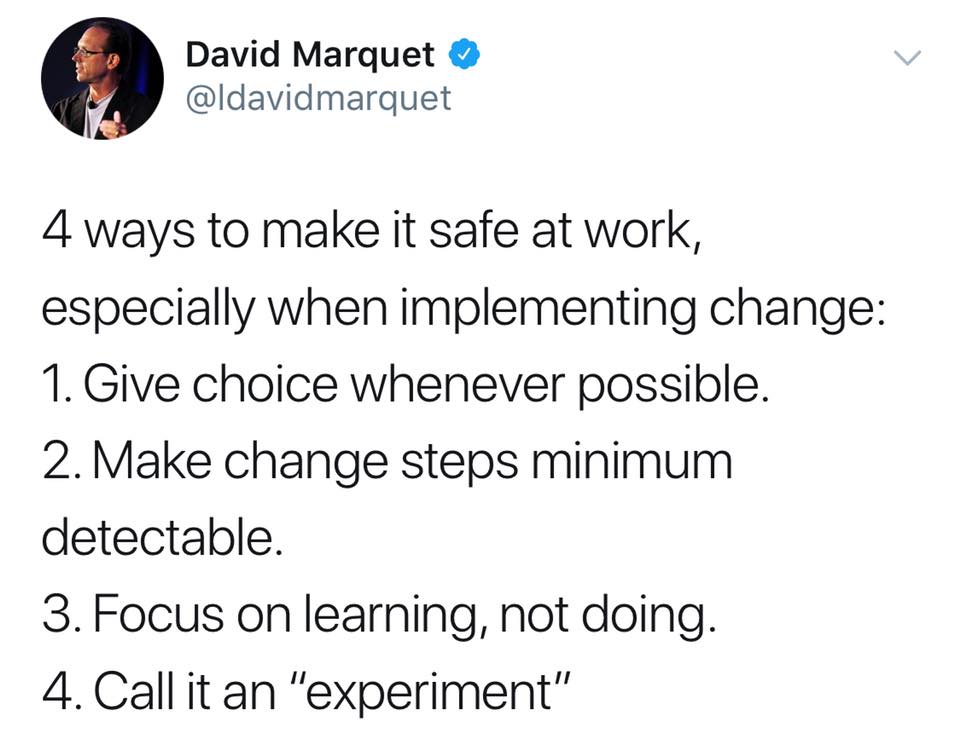I was first exposed to the change pyramid in 2013 and still think of it often. I’ve had a fascination with how people interact with change and what makes it succeed or fail. I firmly believe that organizational change approaches for Agile transformations (or any effort) need to be flexible and responsive while allowing stakeholders, change agents, and change participants to pragmatically start from where they are. Many organizations want to change the culture. That’s a step in the right direction—getting warmer! But they focus on processes—getting colder. Processes are dynamic and change often. Culture is a behemoth that can outlast the cleverest of tactics.

In 2014, I spoke at the Global Scrum Gathering about the concept outlined in this pyramid. In essence, if you want to change the culture, you have to start by creating new experiences. What people experience builds their belief system (hot pan = ouch). Someone’s beliefs determine how they will act (hot pan = ouch = don’t touch). The sum of a group’s, department’s, or organization’s actions establishes a culture. So, rather than focusing on changing processes, which can result in severe resistance, try to create new experiences for employees. Demonstrate to them that they are capable of achieving something new. Help them connect the dots on how an iterative approach could help solve their most pressing problems. The result of the session at the Scrum Gathering was a packed room with attendees standing along the back and side walls. We were met with a standing ovation, which completely took me off guard, but it made me realize that we might be onto something.
Therefore, I now approach change through an Agile Experimentation Framework. I’ve found that this framework can be applied from a single team up to an enterprise. The Agile Experimentation Framework is simply this:
- Identify the opportunity
- Build an actionable hypothesis
- Quantify how you will measure success
- Set a timebox
- Measure the results
- Accept, reject, or pivot on the results.
How does this relate to the change pyramid, though? Actionable experiments tap into an employee’s growth mindset by making them a part of the problem-solving process. Presenting an employee with a process change has a much higher likelihood of being met with resistance if their experiences and beliefs don’t align with what is being proposed. Approaching it as an experiment can relieve apprehension for someone who is not open or aligned with a process change. Setting a timebox and measures for the experiment affords a legitimate option to “revert” or to keep inspecting and adapting with precision.
I believe that establishing an experimentation framework is an effective way to accelerate work culture advancement that will support visionary ways of working.









